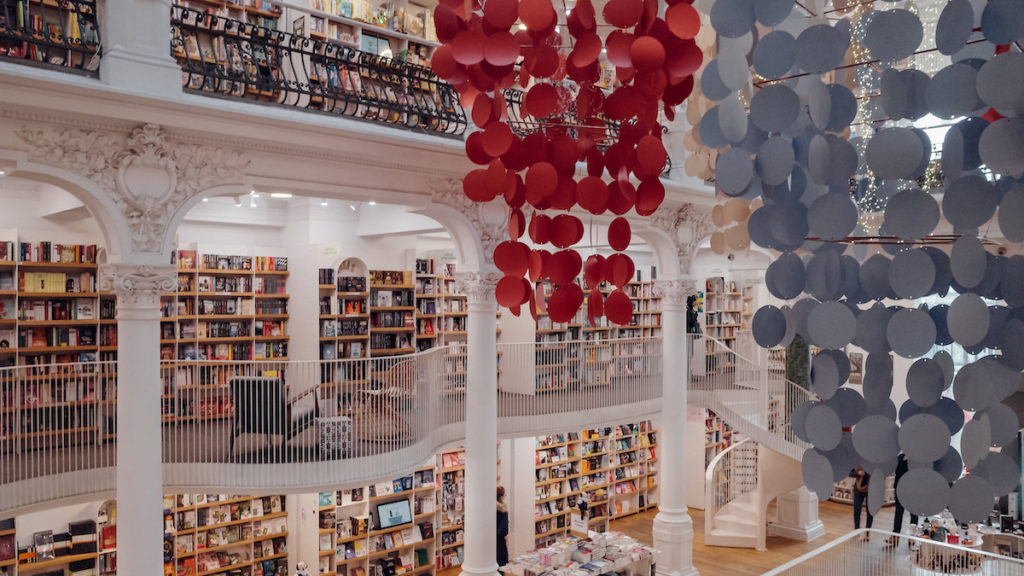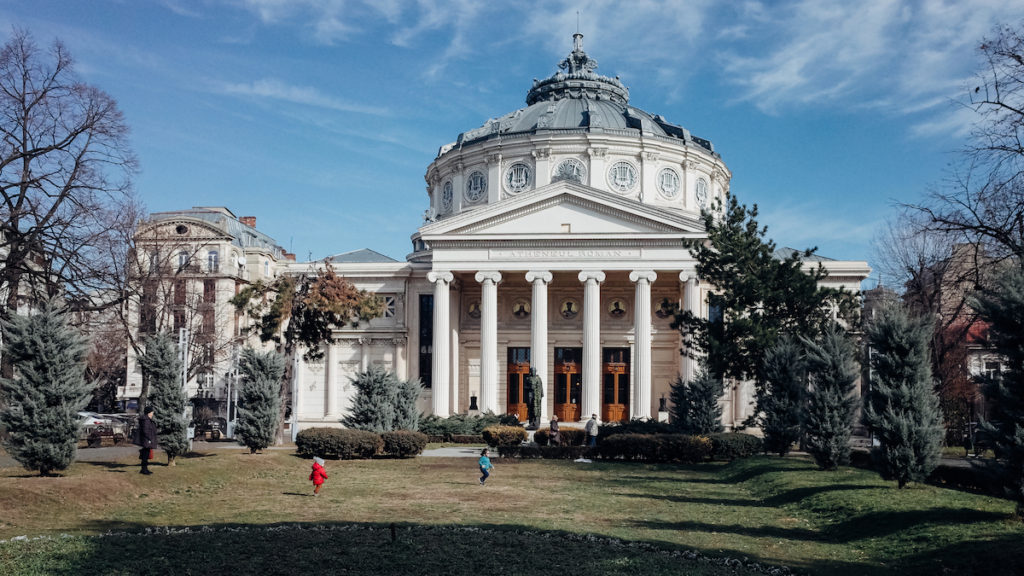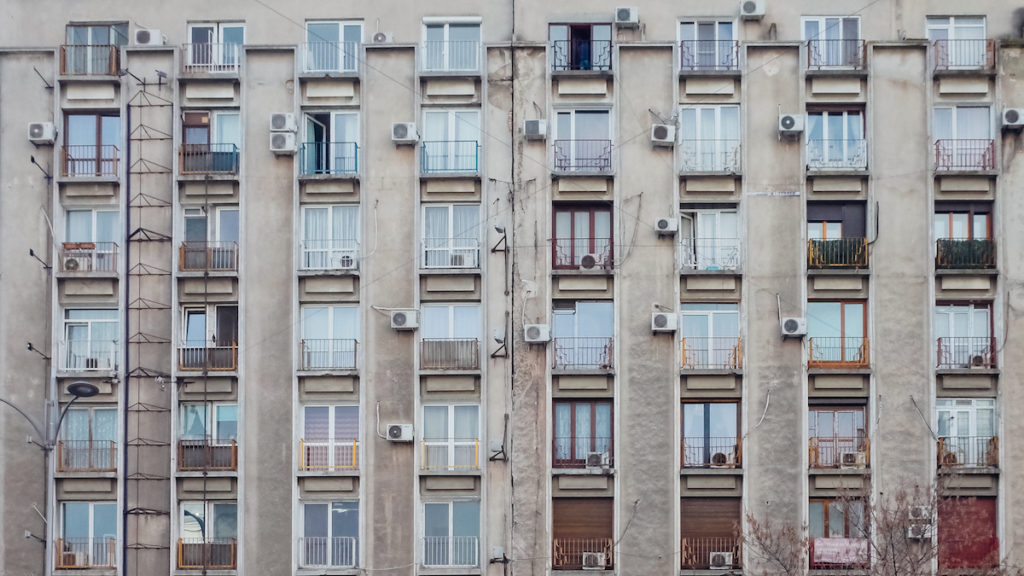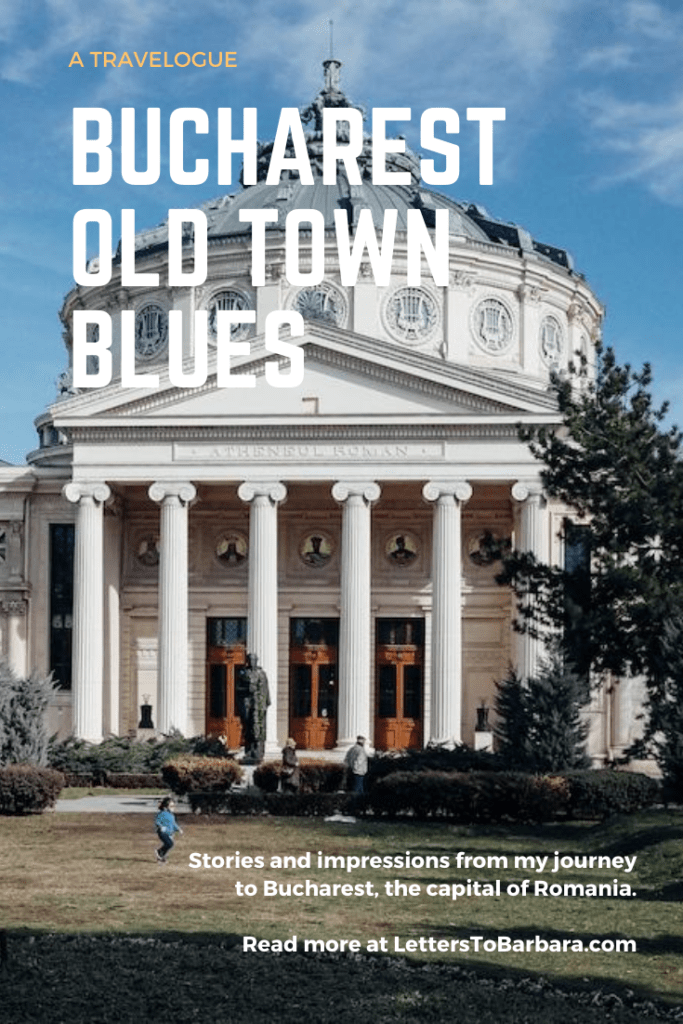Dear Barbara,
My flight from Berlin to Bucharest was probably the most turbulent flight I ever had. The storm Sabine (elsewhere in Europe known as Ciara) was at its peak when the plane took off. The first thirty minutes were really tough. While this can always bring a certain degree of irritation, I didn’t care about it that much. To be honest, I was more irritated by the plane itself and the future of aeronautics. Planes are getting bigger, but seats are getting narrower. Traveling like sardines is not something I can tolerate. No, I’m not going to justify that services and prices should go hand in hand under some odd economic prism. I thought the 21st century would be an era of exceptional services. Instead, the services become worse -and ridiculously pricey as well.
I arrived in Bucharest cramped, and the moment of landing, I saw snow out of the window. There was a severe snowfall a couple of days ago, and there is still an icy white blanket visible at the airport. The fields around the airstrip have fifteen centimeters of snow, but the Otopeni Airport is fully operational. Once in a while, you can see huge snow piles: workers pushed it aside with shovels and brooms. I appreciate the workers shoveling the snow more than the managers that dictate prices and comfort levels.
As it’s always the case in Eastern Europe, public transport is fair and accurate. I took the bus 783 from Otopeni Airport, and fifty minutes later, I reached the center. It was pitch black when I finally started walking towards my hotel in Bucharest. As you probably remember, my first impression from Kyiv by night was enthusiastic; however, I can’t say the same about Bucharest. But soon, I’ll try to figure out what the most impressive thing about Bucharest is.
The Old Town of Bucharest

My days always start early in Bucharest, and I usually stroll through the Old Town. There seem to be neverending renovation projects and refurbishment in this area: most buildings have a rundown feel, while a few shine proudly under the sun. A slow development takes place in Bucharest, and you can feel the bond to bigger European capitals. Western culture invaded Bucharest, and the Old Town is slowly abolishing its local color. It’s true: the architecture remains an example of the region’s urban planning, however, filling an Old Town with strip clubs is far from wise. Bucharest’s nickname is Little Paris, but its Old Town is definitely more of a Little Krakow.
Inequality is rather evident in downtown Bucharest. At rush hours, I feel that I walk in a light dystopia, where Porsches and the homeless coexist within a distance of centimeters. I’ve seen it elsewhere, sure, but not to this extent. As I walk towards Stavropoleos church, the Orthodox landmark of the city, an older man approaches me. He sells books, most likely second-hand ones. Six in one hand, four in the other. He begs me to buy one. I have no idea if that’s a marketing technique, but it’s not what I find essential in the scene. What matters here is how modern societies leave their elderly citizens helpless. I give him some money, and he’s almost emotional. He says something that I don’t understand, and then he drags himself towards the next person.
Diversity is a welcome element in every place -at least for me- and Bucharest seems to have its underground networks, its own subcultures. One should never forget the DNA of the Old Town of Bucharest: this is an area destroyed several times in the past. Sometimes this happened due to fires, other times because of earthquakes. There were significant catastrophes during World War II, and communism had its part in the degradation process. I truly hope that New Capitalism won’t give the knockout punch to the city.
I, somehow, try to remain optimistic. The Old Town, which probably sets the city’s tourist agenda, was the district of artisans. It took its form in the 16th century around the Princely Court, and several street names originate from that time: Bacani, for example, stands for Grocers. The Great Fire of 1847 destroyed one-third of the city and almost entirely the Centru Vechi, as the locals call the Old Town of Bucharest. The Dambovita river on the southern part flows slowly. The river saw the fire of 1847 and today observes an area that rapidly becomes a red-light district. But rivers can’t decide on a city’s future; only people can.
A city in transition

One day, I walk past the Romanian Athenaeum, the iconic concert hall of the city. That’s also the home of the George Enescu Philharmonic Orchestra, and I see a couple of people carrying instruments. I can’t tell if they are part of the orchestra or not. Next to me, an older woman feeds pigeons. I raise my camera to take a photo, but she waves to stop. I, of course, obey. She carries on feeding the birds; there is still some snow in the park in front of the Romanian Athenaeum. The park itself is named after the poet Mihai Eminescu, the national poet of Romania and Moldova.
I then follow the Calea Victoriei, or Victory Avenue, one of Bucharest’s most prominent streets. That’s no doubt an upmarket street, with several posh shops and renovated buildings. It’s no coincidence that Calea Victoriei was the first street that got illuminated by candles in Bucharest back in 1814. This street is full of history: take, for example, the Casa Capșa, a legendary restaurant operating since the early 19th century. It changed its use several times in the past, but it still finds a way to operate. Nowadays, it also hosts a hotel.
The Casa Capșa is not the only example of innovation through a transformation of usage in Bucharest. There are several examples in the city, from hidden arcades to legendary buildings, and it seems that this is one of Bucharest’s virtues. I bring back to my mind the Old Town: it will, hopefully, transform itself into something more beautiful.
The people of Bucharest

It’s always hard to explain human geography. After exiting the Presidential Palace that Nicolae Ceausescu built, I stroll around the city. Once again, I cross the Old Princely Court, the Stavropoleos Monastery, and observe architecture in decay. Elsewhere in Europe, art nouveau is treated as a treasure, but some of the finest examples slip into decline here in Bucharest. And I keep on walking.
After seeing the pharaonic building of Ceausescu, I want to learn more about the people. I reach University Square, which is always vibrant, and I take a turn towards Calea Mosilor. There starts an area less lively but also more enjoyable. Life unfolds slowly, and even when I reach Bulevardul Carol I, the feeling remains the same. It’s one of these silent days I have on every journey. I don’t want to interfere, and I don’t want to talk that much. I’m just checking faces -and sometimes I shoot candid photos.
These days are always about observation -and introspection has no place in them. The youngsters seem really energetic, and they behave exactly like elsewhere in Western Europe. Of all the Eastern European countries, the Romanians speak the best English by far. It’s probably because of the Latin alphabet, even though it’s a modification of the classical Latin one. But they don’t have to adapt to a totally new alphabet, which gives them an advantage.
On the other hand, the older Bucharesters look tired. Their faces aren’t as fresh as in countries like, for example, Germany, and they wear thick coats and old-fashioned hats. When I finally decide to open up to the locals, I realize that there’s a language barrier: whenever I try to approach them, there’s always that wall of language. Words remain unspoken. I want to ask them how they feel about Romania becoming a member of the European Union, but unfortunately, I have no chance to figure it out. If I have to believe the younger Bucharesters, who sometimes speak on the elderly citizens’ behalf, most people assume it a positive development.
The taxi drivers of Bucharest

On my very last evening in Bucharest, the weather is remarkably mild. There’s no snow anymore, and the morning sunshine gave place to a chilly but tender night. As it’s always the case, I don’t want to go back to the hotel. I prefer to wander through the city and see what the night has to offer. But after a short walk, I think of finding a bench and observe the taxi drivers.
Everybody advised me not to use a taxi in Bucharest: they said it usually ends in a rip-off. Whenever I hear such remarks, I’m tempted to give them a try. But this time, I decided not to use any transportation means. There’s a metro in Bucharest, there are numerous trams and buses, and Uber is available as well. And of course, taxis. But the city is a joy to walk, and I kept walking every day.
There are countless spots in downtown Bucharest where taxi drivers gather and socialize while waiting for the next client. The places seem random to me. One in front of the other, Bucharest’s taxis create short yellow lines under the night sky. Whenever you walk close to them, at least one will try to fish you: “Taxi? Taxi?” This is how the old world converted impressions into clients, I guess.
After nodding negatively, you are indifferent to them. You are, in other words, a failed conversion. That night, after nodding that I don’t need a taxi, the drivers don’t pay attention to me anymore. They keep on talking, they carry on laughing, and they are only interrupted when somebody walks in their perimeter. “Taxi? Taxi?” Most of the passersby have no intention to embark on a taxi ride. The majority of people use smartphones anyway, and they order Ubers in no time.
And then, as if innovation is what Bucharest really is about, one of the taxi drivers opens the door for two women and says: “Here, ladies, the ride is free for you.” All of a sudden, this becomes a scene that I want to observe. The women giggle. “C’mon, I’m serious here. Where are you from?” One of them replies that they come from the United States. “And it’s not common for a taxi driver to offer you a free ride in the USA? In the United States of Europe, it’s very common,” he says. The two women reject the offer and carry on walking.
And then, a middle-aged man approaches the driver. “Well, I’m also from the United States, but I’m willing to accept your offer for a free ride.” The taxi drivers laugh in perfectly synchronized laughter. It feels like the first night of spring, and that loud laughter on the edge of Bucharest’s Old Town sounds like a prelude to the song of the naives.
“Man, what’s wrong with you?” asks the taxi driver that opened the door to the women. “There are no free taxi rides in Bucharest.”
That 783 bus
It’s also sunny the day I leave Bucharest. I’m embarking on the 783 bus from the city center to Otopeni Airport while the driver has a cigarette break. The windows are dusty, and I can’t see anything outside. Just a few passengers embark after me, and I find it bizarre for a bus that goes towards the airport in the late afternoon. For some odd reason, I think of that bus in Sikinos; it probably had more passengers than this one.
Five minutes later, the driver starts the engine, and we are on the move. I see an orthodox church outside the dusty window, which appears and disappears like a fleeting painting of Pointillism. And then another church and another, and by the time the bus reaches Bucharest’s outskirts, I realize how many churches Bucharest has. The churches are not that impressive here, though; they seem to be a more shy admittance of belief. But religion is important in Romania’s capital: I saw plenty of people forming a cross with their fingers upon their chests. Sometimes the most concrete elements of a city aren’t visible at once.
After the bus leaves the city behind, there’s only a vast empty space. I’m curious to see what Bucharest will make out of these immense plots in the future. A city that constantly finds new uses and innovates by transforming could be an excellent test for its potential. Exactly like people, cities have the right to fail too, like in the case of the Old Town. Nonetheless, the moment I step foot at Henri Coanda Airport, I promise to return soon to Bucharest. It’s definitely a city to observe, especially because nowadays I’m often wondering which European capital will be the new Berlin.
Love,
George
More about Bucharest: The Parliamentary Palace, Street Photos from Bucharest & A travel guide to Bucharest
*Get my FREE Travel Writing Course*
Pin it for later

Please share, tweet, and pin if you enjoyed reading Bucharest and the Old Town blues. Your support keeps this website running and all the info up-to-date. 🙂
Last Updated on May 22, 2021 by George Pavlopoulos


